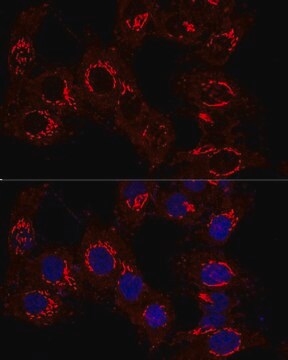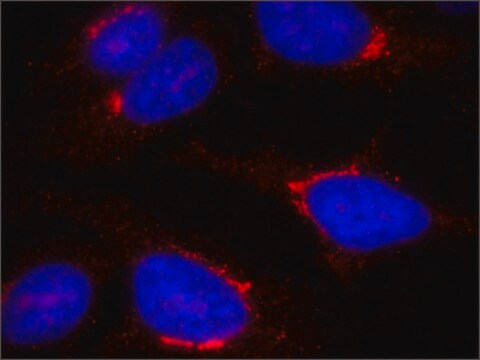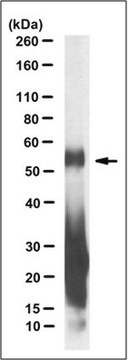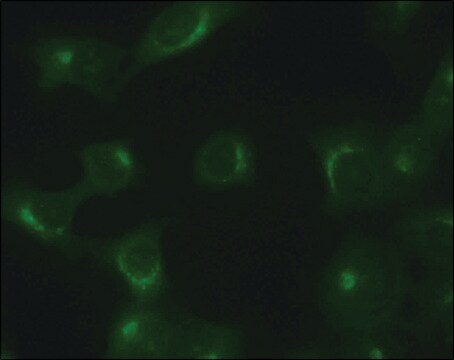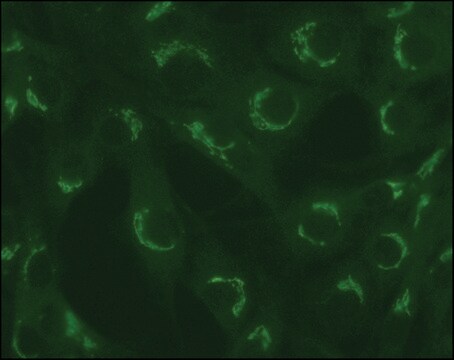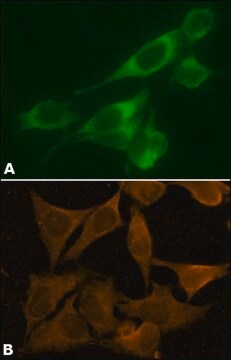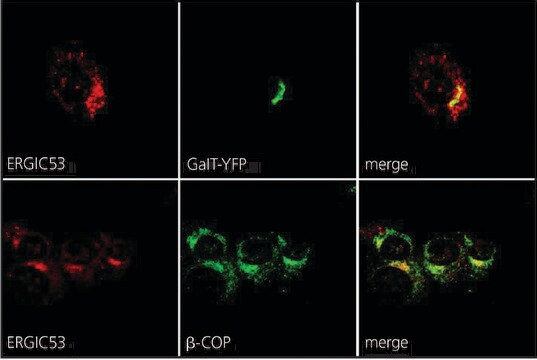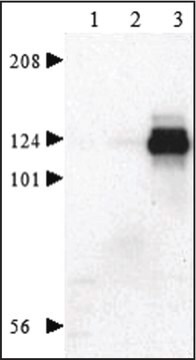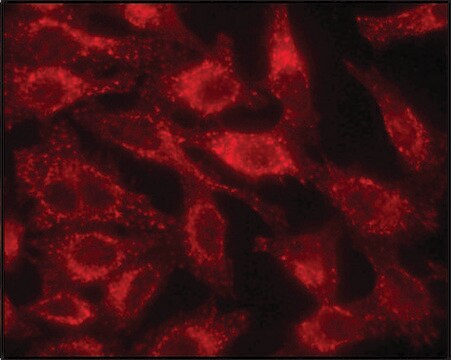G7295
Anti-GM130 (C-terminal) antibody produced in rabbit
affinity isolated antibody, buffered aqueous solution
Synonym(e):
Anti-GM130 (Golgi Matrix Protein of 130 kDa), Anti-Golgi Autoantigen, Anti-Golgi Matrix Protein GM 130
About This Item
Empfohlene Produkte
Biologische Quelle
rabbit
Konjugat
unconjugated
Antikörperform
affinity isolated antibody
Antikörper-Produkttyp
primary antibodies
Klon
polyclonal
Form
buffered aqueous solution
Mol-Gew.
antigen ~130 kDa
Speziesreaktivität
mouse, human, rat
Methode(n)
immunoprecipitation (IP): 2-4 μg using Hela and 3T3 cell extracts.
indirect immunofluorescence: 0.2-0.4 μg/mL using rat NRK cells
western blot (chemiluminescent): 0.1-0.2 μg/mL using whole extract of rat NRK cells
UniProt-Hinterlegungsnummer
Versandbedingung
dry ice
Lagertemp.
−20°C
Posttranslationale Modifikation Target
unmodified
Angaben zum Gen
human ... GOLGA2(2801)
mouse ... Golga2(99412)
rat ... Golga2(64528)
Allgemeine Beschreibung
Immunogen
Anwendung
- immunoblotting
- indirect immunofluorescence
- immunoprecipitation
- immunohistochemistry
Immunohistochemistry (1 paper)
Western Blotting (1 paper)
Biochem./physiol. Wirkung
Physikalische Form
Haftungsausschluss
Not finding the right product?
Try our Produkt-Auswahlhilfe.
Ähnliches Produkt
Lagerklassenschlüssel
10 - Combustible liquids
WGK
WGK 3
Flammpunkt (°F)
Not applicable
Flammpunkt (°C)
Not applicable
Analysenzertifikate (COA)
Suchen Sie nach Analysenzertifikate (COA), indem Sie die Lot-/Chargennummer des Produkts eingeben. Lot- und Chargennummern sind auf dem Produktetikett hinter den Wörtern ‘Lot’ oder ‘Batch’ (Lot oder Charge) zu finden.
Besitzen Sie dieses Produkt bereits?
In der Dokumentenbibliothek finden Sie die Dokumentation zu den Produkten, die Sie kürzlich erworben haben.
Kunden haben sich ebenfalls angesehen
Artikel
The isolation of subcellular fractions by centrifugation is a commonly used technique and is widely applicable across multiple cell and tissue types. Because organelles differ in their size, shape, and density, centrifugation can be easily employed to separate and purify organelle fractions from gently homogenized samples.
Unser Team von Wissenschaftlern verfügt über Erfahrung in allen Forschungsbereichen einschließlich Life Science, Materialwissenschaften, chemischer Synthese, Chromatographie, Analytik und vielen mehr..
Setzen Sie sich mit dem technischen Dienst in Verbindung.